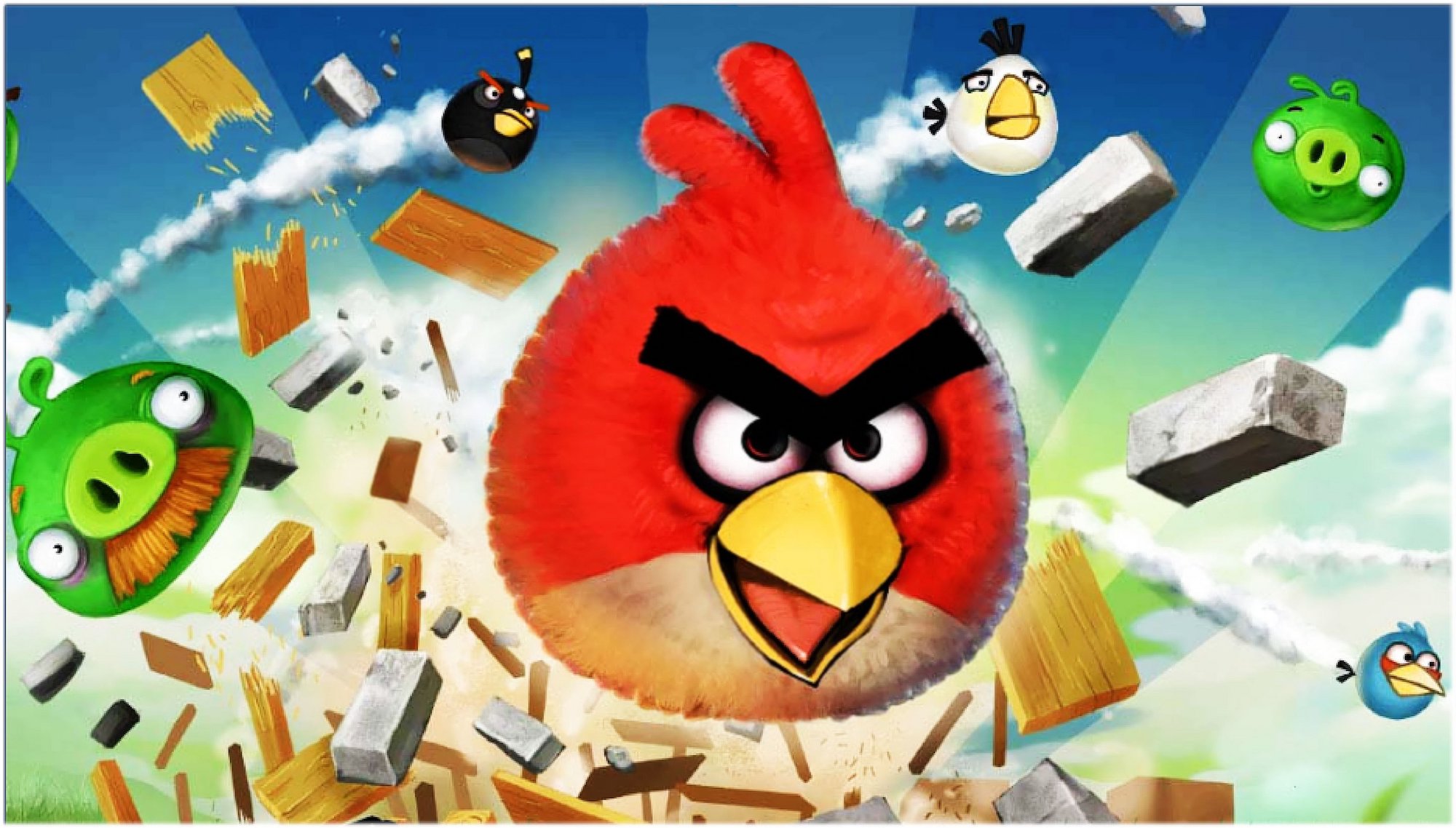
After a childhood of Saturdays spent in the glare of the blinking, artificial lights of the arcade, I have long maintained that the secret to an addictive video game lies in a unique combination of problem solving mingled with absurdity. Nowhere in recent years can this template be seen more clearly than in Angry Birds, the game released in 2009 by Rovio Entertainment, an ailing Finnish firm who were then facing bankruptcy.
Distinctive wingless birds, each one a brightly coloured ball of energy, must be launched at hostile pigs using a slingshot. These avian weapons whizz through the air towards built structures and shelters, which teeter and totter with the impact, and finally come crashing down. Angry Birds combines a clever mix of basic physics and physical comedy, filling in the details of this bizarre world just enough to characterise the birds as friends and the pigs as foes.
Fast-paced, ridiculous and surprisingly immersive, Angry Birds made use of a design centred around the touchscreen experience, which offers the tactile satisfaction of tapping and swiping to pull back the slingshot, take aim and release. Straightforwardly intuitive and yet blandly mind-numbing, Angry Birds was dubbed a prime example of an emerging genre “stupid games” by the New York Times. Within months of launching, it had become the most popular game on iPhone, by 2018 it had been downloaded more than 4 billion times.

The popularity of the game was intimately entangled with the rise of the iPhone (first released two years earlier) which transformed the role of technology in contemporary life. Suddenly the temptation to play was embedded not only in a dedicated portable gadget such as the Gameboy or Nintendo Switch, but in a device linked with almost every part of daily life. Anyone who owned an iPhone was now a potential gamer, and it didn’t take long for the casual market to grow exponentially. People who hadn’t picked up a console in years, or who had never played a computer game at all, found themselves newly addicted to the serotonin rush of the arcade—all contained within a screen no bigger than the palm of one hand.
“Anyone who owned an iPhone was a potential gamer, and the casual market grew exponentially”
Angry Birds offered the ultimate distraction, designed to be picked up and played at a moment’s notice. A single level within the game can take as little as nine seconds to complete. The quick rush of the game was ready to fill the daily commute, the queue at the supermarket, and even the lull in a conversation. Newly hooked on the ready availability of technology, millions quickly became accustomed to around-the-clock entertainment. While the mindless procrastination that games like Angry Birds offer might seem like the antithesis to the world of work, even this behavioural shift has been increasingly turned to capitalist ends. It was reported earlier this month that Amazon has plans to expand their programme of arcade-style mini-games within its warehouses, effectively creating a gamification of the workplace, in order to boost productivity and efficiency.
Five years after they launched, Angry Birds was revealed to be collecting and sending data about its users to advertisers. The game was also named as a “leaky” app in the classified documents released by Edward Snowden in 2014, relating to potential state surveillance in the United States. “Nobody gets too upset about games,” researcher David Nieborg explained to a Vox reporter at the time of the revelation. “But the underlying technology is really powerful. These people are really pushing the technology to the limits where the potential for abuse is massive.” While social media platforms such as Facebook have come under fire for their abuses of user privacy, Angry Birds has largely avoided such criticism, in part due to its innocuous, cutely childlike presentation.
View this post on Instagram
A decade on from its release and the popularity of Angry Birds shows no sign of waning. Even for those who have never played the game, it is difficult to escape its prolific iconography in wider visual culture. The stylised birds have gone on to appear in a variety of merchandise, television franchises and feature films (after a disappointing first movie outing, the sequel scored an impressive critics’ rating of 73 per cent on Rotten Tomatoes). The game has been licensed to a range of soft drinks, a series of comic books, a Chinese theme park attraction and even a National Geographic educational series on birds. Just last year it was announced that Netflix had given a series order to Angry Birds: Summer Madness, premiering in 2021.
To look back at the rise of Angry Birds now is to recognise it as an encapsulation of the changes wrought by the ever-more powerful computers that we all now carry in our pockets. The game’s success reflects an era of relentless consumer engagement, in which everything from our step count to our targeted adverts is quantified. When even the tools of distraction are harnessed to financial ends, work and play become all but the same.





